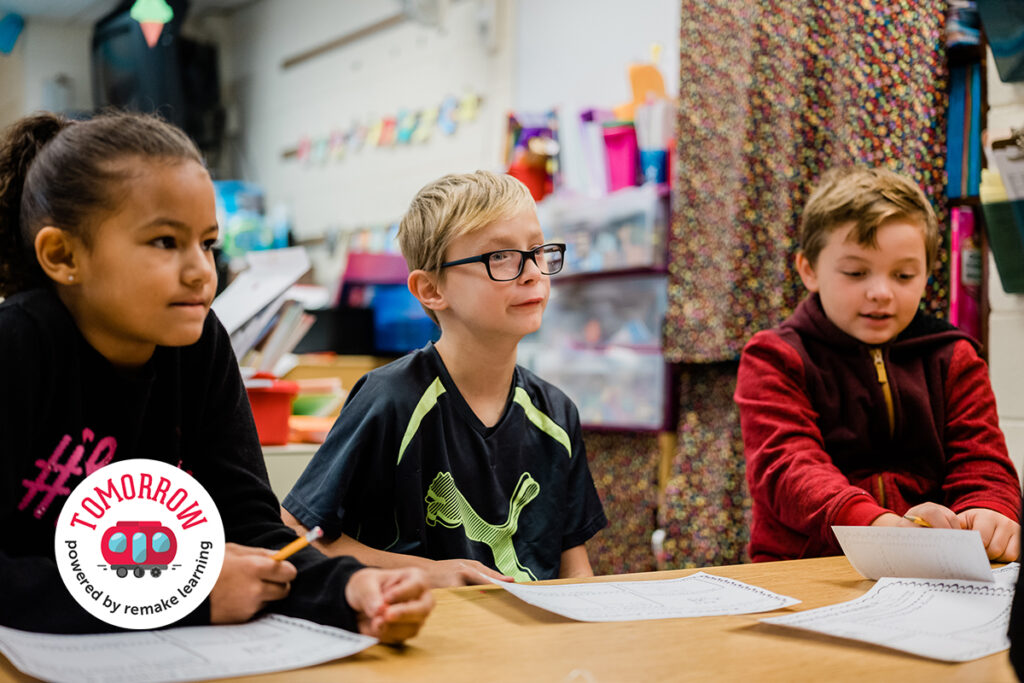A strange thing happened when COVID kept teachers physically separated from students and their families. They began connecting and communicating in new and sometimes better ways.
Research published by the Brookings Institution found that during the pandemic, “educators and education leaders around the globe rapidly developed new and creative ways of engaging parents in their children’s learning.”
And parents quickly responded. They called education hotlines, responded to texts and got to know their children’s teachers over video calls.
For the first time, many parents began to feel they had a meaningful role to play in their child’s education. Teachers wanted to speak with them and hear what they were experiencing. Prior to the pandemic, many parents–especially in communities of color–didn’t feel welcomed as partners by the schools their kids attended.
Earlier this year during a webinar hosted by Learning Heroes and Remake Learning Days Across America, educators discussed the important role that these relationships can play in a child’s development.
It’s vital for educators to let families know they are valued as partners, and to make sure they know their input is welcomed and respected, said Robert Crosby III, managing director of the Flamboyan Foundation.
Listening has begun and relationships are growing. But to build on that growth, Crosby told the webinar audience, “we have to recognize the historical nature of distrust with families and school systems.”
We also have to find ways to listen in new and deeper ways.
Making Time to Listen
Rebecca Wright, a long-time elementary school teacher at Falk Laboratory School at the University of Pittsburgh, found that remote schooling actually opened up new possibilities for listening and noticing things about her students.
“When you’re a step removed from physical presence and physical interaction, it’s like anything else: One sense is weaker, so the other senses have to surge forward,” Wright says. “We were kind of forced to really notice and observe by listening.”
That listening is a vital part of teaching the “whole child.” But for many teachers, it may have always seemed out of reach. If they were struggling to cover exact amounts of the curriculum each day in busy public schools, they may have had little freedom to find creative ways to connect. You can’t do much deep listening when you’re stealing glances at a pacing chart and worrying that you’re falling behind.
Wright points out that at her private school, teachers have a lot of autonomy and flexibility in how they use their time. If schools want teachers to engage in deep listening, they must make a bit of space for teachers to forge authentic connections in their own way.
It doesn’t have to take much time, Wright says. “Have morning meetings that involves a quick check-in. Go around the room: ‘Give me a word that describes your mood.’ And then you can check in with the kids privately.”
Along with communicating via texts or quick video chats, teachers could also allow students to present some of their work in the classroom with their parents present via Zoom. Or, letting them present some work in the evening via Zoom from home, with their parents nearby as their audience.
Teachers could then invite parents to reflect on what they’d seen and let students share with their teacher and family about the experience of presenting their work.
Simple choices like this can be the first step in beginning to understand parents’ and students’ hopes, concerns, joys and dreams.
Getting Creative With Schedules
The pandemic forced all of us to find nontraditional work-arounds for the things we couldn’t do. For generations, schools had run on strict schedules. But now learning was happening asynchronously on whatever schedule worked best.
With many parents’ work schedules upended, teachers and parents connected at whatever time of day could work. It seemed odd at first, but this flexible scheduling was surprisingly effective.
Earlier this year when Remake Learning asked Pennsylvania educators to share about the “quick wins” they’d had amid the challenge of the pandemic, many teachers said they now meet with parents virtually in small groups or one-on-one at whatever time works for everyone.
Some parents have even been invited to participate in class activities, thanks to creative scheduling: At Northwestern School District, about two hours north of Pittsburgh, one teacher scheduled a virtual classroom visit with an author for the evening, so parents and kids could participate together.
These connections can lead to the kind of deep listening that helps people shake off assumptions about learners, teachers and families.
Personalized Learning Starts With People
Listening and knowing students is a key to providing the truly personalized learning that 21st-century students need. If we don’t know a young person and their family, how can we activate and build on their interests, find their most effective ways of learning and help grow their unique strengths.
Deep listening and relationship building also helps teachers point students toward community resources like interest-based afterschool programs, volunteer opportunities and even internships. If caring adults listen to a child, they’ll know which existing resources can address challenges, spark interest and help build that child’s future.
This preferred future is becoming more possible than ever. But we have to ensure that the progress of the past year doesn’t fade when the pandemic becomes a memory.
One idea offered in last summer’s Remaking Tomorrow report addresses this need to build on the growing relationships and listening that we’ve been seeing: What if each school had a full-time Director of Relationships?
This administrative-level position would focus on building relationships in support of learners’ holistic health and well-being.
We know that increased communication and listening between schools, families and out-of-school time providers can give all the caring adults who interact with a given child a clearer picture of who they are, what they need and how to help them thrive.
What if that became our “new normal”?
